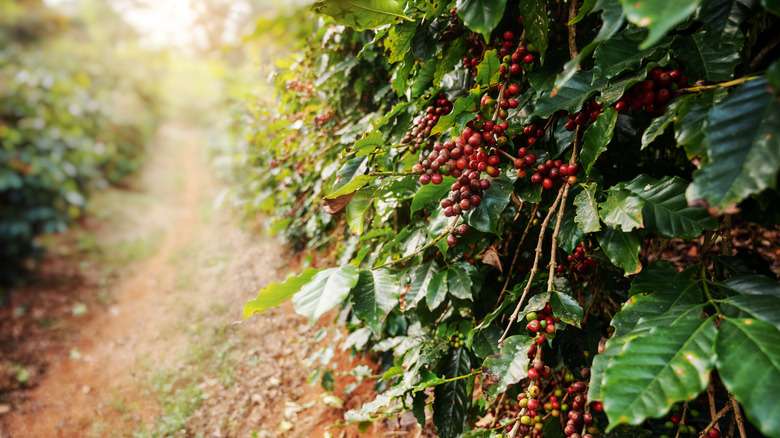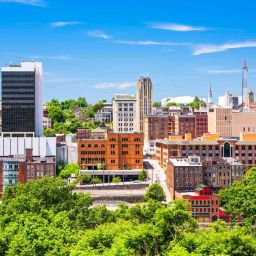
The global coffee industry is a colossal market, with the USA playing a pivotal role, predominantly as a consumer. However, the narrative is gradually evolving as some states have begun cultivating coffee, challenging the traditional coffee-producing regions.
This segment sheds light on the burgeoning coffee production in the USA, focusing on the states spearheading this shift and the unique characteristics of their coffee.
Key Takeaways
- Hawaii’s Coffee Dominance: Hawaii stands out as the premier state for coffee production in the USA, with Kona coffee from the Kona Volcanic Region being particularly renowned for its quality and flavor profile. Hawaii’s ideal climate contributes to its success in coffee cultivation.
- California’s Innovative Approach: California, though not traditionally suited for coffee cultivation, has embraced innovative techniques, particularly in Southern California, where coffee is grown alongside avocados, leveraging the mutual benefits of intercropping.
- Emerging Coffee Culture: Both states are contributing to a unique American coffee culture, emphasizing local, sustainable production and distinctive flavor profiles that appeal to coffee aficionados nationwide.
- Economic Impact: The growth of coffee production in these states not only diversifies the American agricultural landscape but also adds a valuable component to the local economies, promoting tourism and local artisanal industries.
By fostering a distinct coffee-growing niche, Hawaii and California are positioning the USA on the global coffee production map, challenging the norms and showcasing the potential for diverse and high-quality coffee production within the country.
Hawaii – The Leading Coffee Producer
Hawaii, renowned for its picturesque landscapes and rich volcanic soil, holds the crown as the premier coffee-producing state in the USA. Among its various coffee-growing regions, the Kona District on the Big Island stands out, producing the famed Kona coffee, a sought-after commodity in the global coffee market.
Historical Context: Coffee was introduced to Hawaii in the early 19th century, and over the years, it has flourished, especially in the Kona region. The unique microclimate of this area, characterized by morning sunshine, afternoon rain, and mineral-rich volcanic soil, creates an ideal environment for coffee cultivation.
Kona Coffee’s Distinction: Kona coffee is celebrated for its rich flavor profile, which includes hints of nuts and fruits, coupled with a smooth finish. Its exclusivity is safeguarded by strict regional certification standards, ensuring that only coffee grown in the Kona region can bear the Kona name.
Cultural and Economic Impact: Beyond its contribution to the global coffee market, Hawaii’s coffee industry is a vital component of the state’s tourism and agriculture sectors. Coffee farm tours are popular among visitors, providing an immersive experience into the world of coffee production.
California – The Emerging Coffee Producer
While not traditionally associated with coffee production, California is making significant strides in the industry. Its venture into coffee cultivation is marked by innovative approaches, particularly in Southern California, where the integration of coffee plants with avocado orchards represents a novel agricultural experiment.
Innovative Farming Practices: In regions like Santa Barbara and San Diego, farmers are cultivating coffee under the shade of avocado trees. This intercropping system benefits both crops, with coffee plants enjoying the shade and moisture retention provided by the avocado trees, while contributing to the soil’s health.
The Frinj Influence: A notable figure in California’s coffee scene is Jay Ruskey of Frinj Coffee, who spearheaded the coffee cultivation movement in the state. His efforts demonstrate the potential for coffee production in non-traditional regions, leveraging advanced agricultural techniques and climate adaptation strategies.
Market Potential: California-grown coffee, although in its nascent stages, is gaining attention for its unique flavor profiles and sustainable farming practices. As the industry matures, it is poised to add a distinctive chapter to the American coffee narrative, emphasizing local production and innovation.
Through the pioneering efforts of states like Hawaii and California, the USA is gradually carving out a niche in the global coffee production landscape, showcasing the diversity and adaptability of its agricultural sectors.
Coffee Production Beyond the States
Puerto Rico’s Coffee Industry
Puerto Rico’s journey with coffee began in the 18th century, quickly establishing itself as a cornerstone of the island’s economy. By the 19th century, Puerto Rican coffee was highly prized in European markets for its rich flavor and high quality. However, the industry faced declines due to natural disasters and economic challenges.
Today, efforts are being revitalized to restore Puerto Rico’s coffee glory, focusing on sustainable practices and specialty coffee. The island’s tropical climate and mountainous terrain offer ideal conditions for coffee cultivation, promising a bright future for this historic industry.
Potential in Other Regions
While Hawaii and California are notable for their coffee production, other regions like Texas and Florida are exploring their potential in this field. Texas, with its vast land and varied climates, is investigating the feasibility of coffee cultivation, particularly in its warmer southern regions.
Florida, known for its tropical climate, has also seen experimental coffee projects taking root. These endeavors face challenges such as climate adaptability, pest control, and market competition. However, they highlight the growing interest and potential for expanding coffee cultivation within the USA, leveraging innovative farming techniques and climate-resilient coffee varieties.
FAQs
- Why is coffee not widely grown in other states? Coffee requires specific climatic conditions, including high altitude, tropical temperatures, and abundant rainfall, which are not prevalent in most of the USA.
- What are the specific requirements for coffee cultivation? Successful coffee cultivation requires well-drained, fertile soil, protection from wind and frost, and a steady temperature between 60°F and 70°F. It also needs significant labor for planting, maintaining, and harvesting.
- Can technology impact coffee production in less suitable climates? Advances in agricultural technology, such as controlled environment agriculture (CEA), offer potential for growing coffee in non-traditional areas, though this is often cost-prohibitive.
Final Thoughts
The exploration of coffee production in the USA, from the established farms of Hawaii to the burgeoning fields of California and beyond, illustrates the country’s unique position in the global coffee landscape. While challenges remain, the potential for expansion and innovation in regions like Texas and Florida signifies a dynamic future for American coffee.
The resurgence of Puerto Rico’s coffee industry further underscores the rich heritage and promising prospects of coffee cultivation in the USA. As the country continues to navigate the complexities of climate, technology, and market demands, its role in both the consumption and production of coffee remains pivotal.









